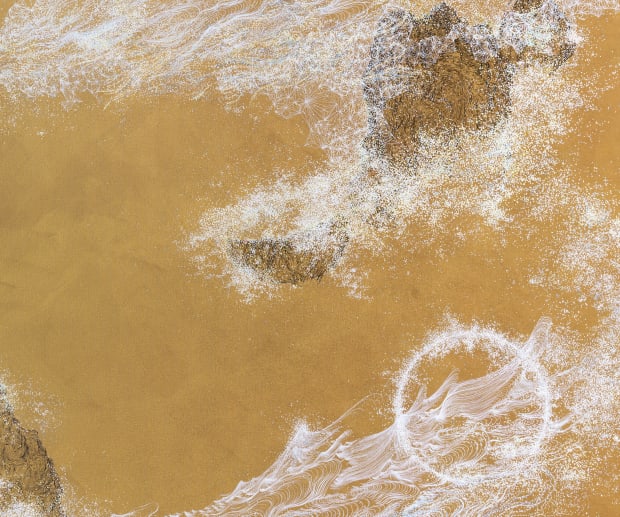
Sandra Cinto’s fine brush draws intricate mountains and clouds onto a gradient gold background. These delicate motifs appear across her works, populating her lyrical worlds. Cinto’s seemingly weightless environments hover gently between fantasy and reality, creating a luminous plane where anything is possible.
Sandra Cinto’s exhibition, Prelude for the Sun and the Stars, is on view at Es Baluard Museu D'Art Contemporani de Palma, Mallorca, Spain through January 11, 2026.
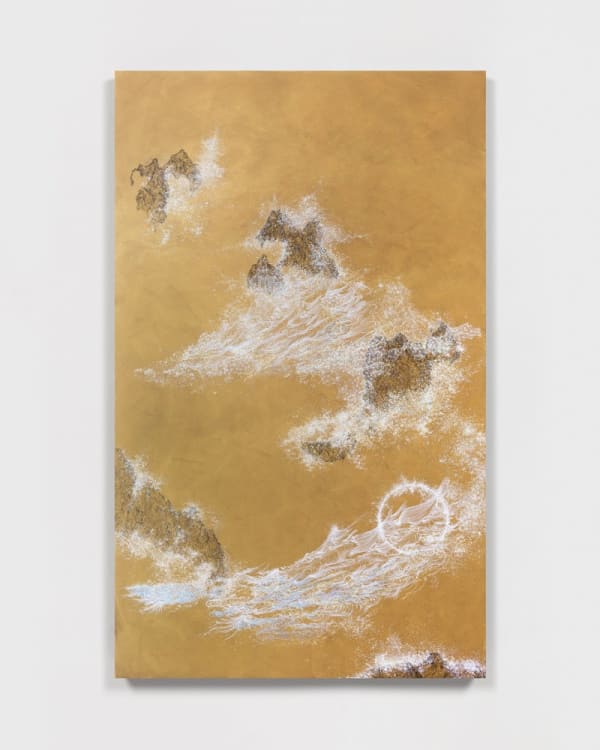
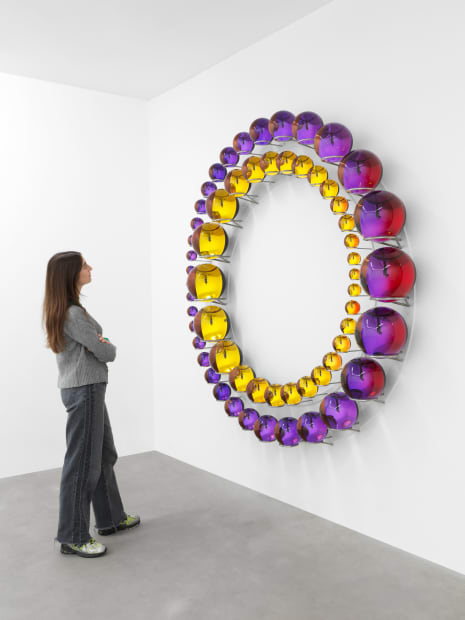
As viewers move around to examine the reflective interiors of Successful coexistence beyond earth, the artwork changes constantly. Seen from the front, it seems to glow in bright shades of red and yellow. From either side, the palettes of the two rings diverge, and the rings are infused with the contrasting complementary colors of purple and yellow.
To create this effect, the back third of each sphere is coated with a smooth gradient that transitions from purple to red to yellow. The curved glass acts like a lens, causing the paint to swell and fill the sphere with a single tone depending on the angle at which it is viewed.
Olafur Eliasson’s work is currently on view in two solo exhibitions: Presence at The Queensland Art Gallery of Modern Art, Australia through July 12, 2026, and Your curious journey at the Museum MACAN, Jakarta Barat, Indonesia through April 12, 2026.
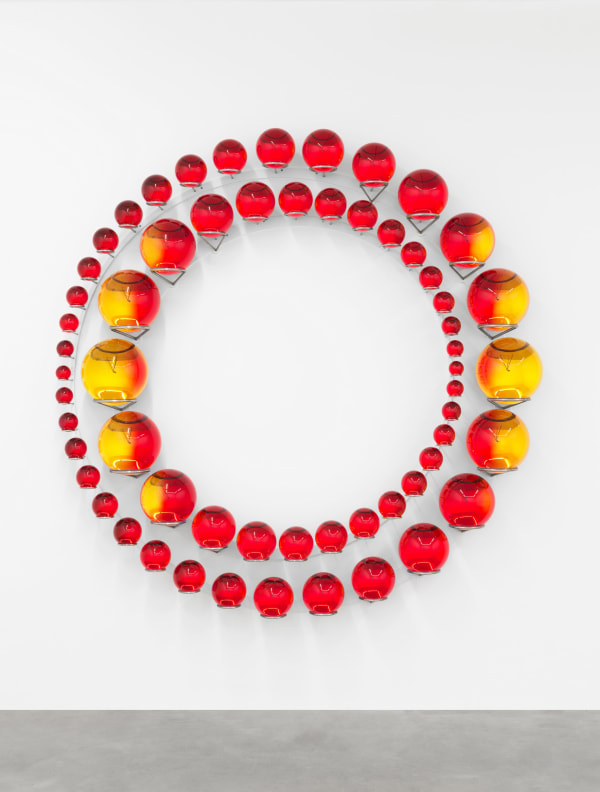
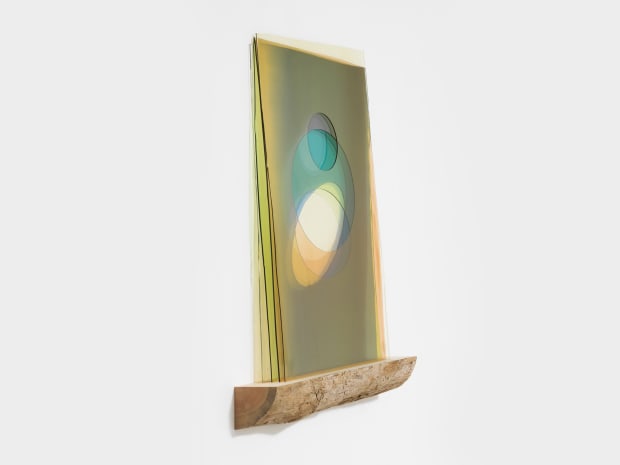
This series is an extension of Olafur Eliasson’s long interest in color, transparency, and layering – topics he first began addressing in watercolor paintings, to which the glass works are closely related. Both groups of works use compositions of circles and ellipses to create a sense of movement and depth in space and time.
Arrayed in leaning stacks upon a driftwood shelf, colorful panes of hand-blown glass overlap to create a variety of hues, while circular cutouts allow surprising tones to shine through the layers. The driftwood logs - salvaged from the coast of northern Iceland - have been planed into a shelf on one side and left raw on the other.
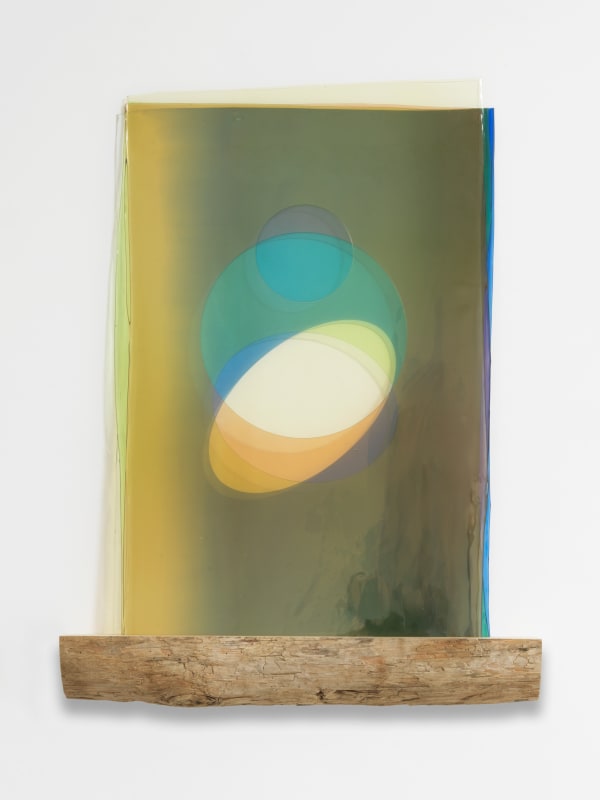

The Aeolic Cluster series advances Saraceno’s long-standing artistic inquiry Air-Port-City / Cloud City, a proposal for airborne habitats as a new, alternative form of urbanism. This work is composed of a number of iinterconnected modules constructed from mirrored hand-blown glass, a material that, like clouds, exists at the intersection of air, water, and earth. In nature, matter floats through the atmosphere until it clusters together to form groups of clouds. The irregular facets of the sculpture are inspired by the geometry of the Weaire-Phelan structure, found in the way foam and soap bubbles form. The reflective surfaces illuminate an aqueous world, where boundaries become fluid and human spatial coordinates are challenged.
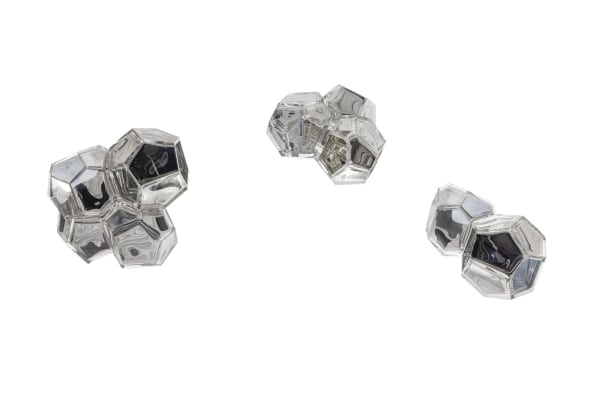
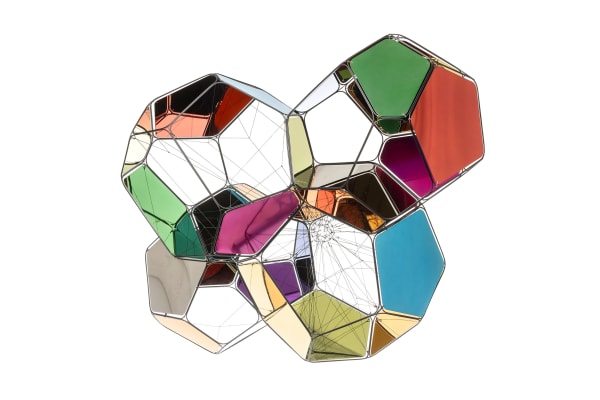
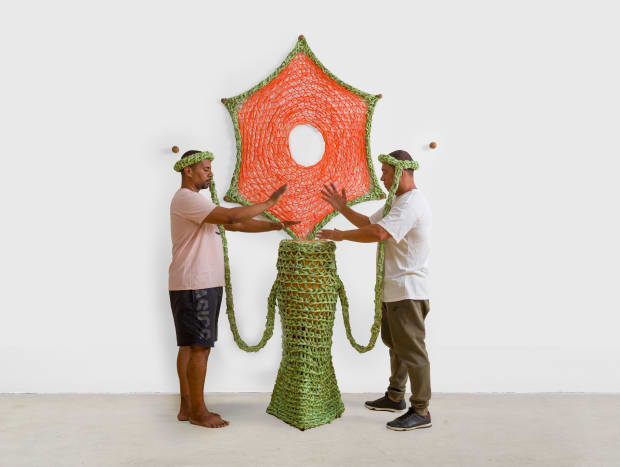
Tambor Drum Respira Vida Breathing Life is an example of the myriad of ways in which Ernesto Neto’s works redefines the relationship between artwork and viewer, and how it can bring human beings together. Designed for direct interaction, this sculptural wall work connects viewers’ hearts, physically and spiritually, as it channels the pulse of life from one person to another and back again. A biomorphic sculpture of crochet and rose quartz, Tambor Drum Respira Vida Breathing Life continues Neto’s career-long inquiry into the sculpture, body and the natural world.
Ernesto Neto’s work Ba Ka Ba, A Dance of the Eternal Polarities is on view at the Seoul Museum of Art through December 2026.
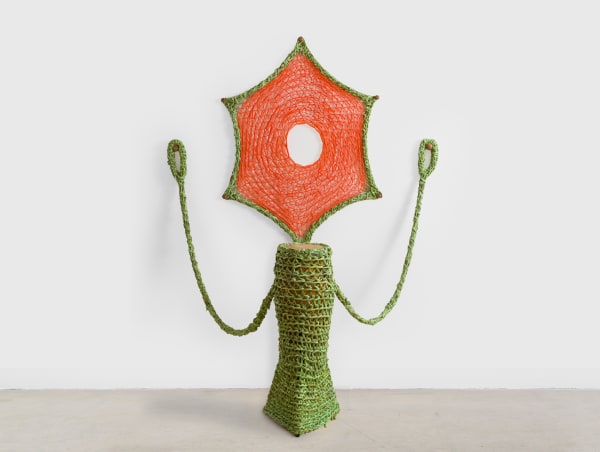

Analia Saban dissects and reconfigures traditional notions of painting, often using the medium of paint as the subject itself. Blurring the lines between painting and sculpture, imagery and objecthood, her work frequently includes plays on art historical references and technology. This new tapestry abstracts the details of a typical flowchart, while the materiality deconstructs and re-invents conventional painting elements. Saban creates these textile works by interlacing linen threads as warp with long strips of dried, yet pliable acrylic paint as the weft.
Saban’s current solo exhibition Flowchart is on view at our gallery in New York through December 18th.
Upcoming, Saban will have a major solo exhibition at LACMA in April 2027, which will travel to the Mildred Lane Kemper Art Museum in September 2027.
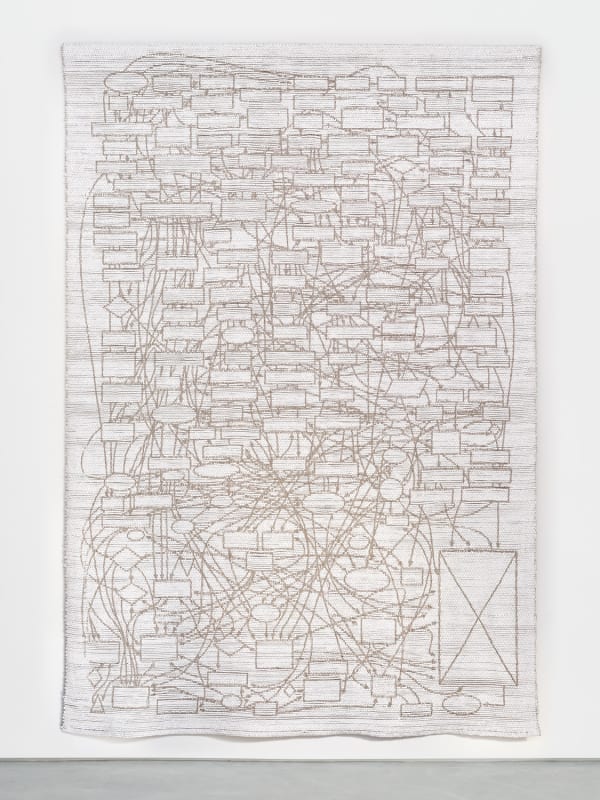
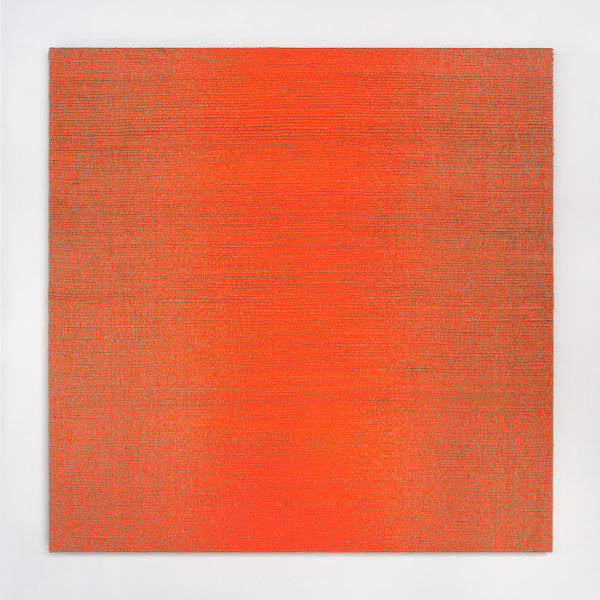
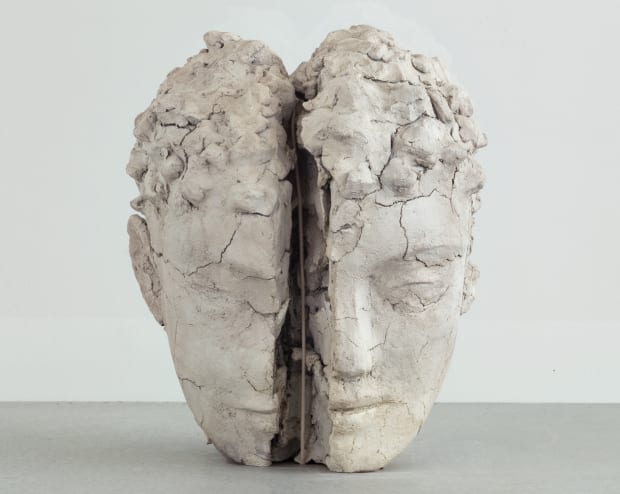
Head with Rope is produced through an intimate logic that has now become signature to Mander’s practice. Rendered in bronze, the head appears to be made of wet clay and wood—mid way through the process of becoming. In this way, the artist freezes a very specific moment in time, highlighting the fragility of every moment that passes. The manipulation of material and scale generates a sense of puzzlement and awe, masterfully creating a sense of timelessness— while the sculpture seems to be just made, it is at the same time enigmatically atemporal. Lorenzo Benedetti, the curator of Mark’s 2013 Venice Biennale presentation, has aptly said, “In Manders’ work there is constant attention to inserting multiple elements that meld into one entity that seems to come from a mysterious lost encyclopedia.”
Mark Mander’s exhibition Mindstudy is on view at the Museum Voorlinden, Wassenaar, Netherlands through January 18, 2026.
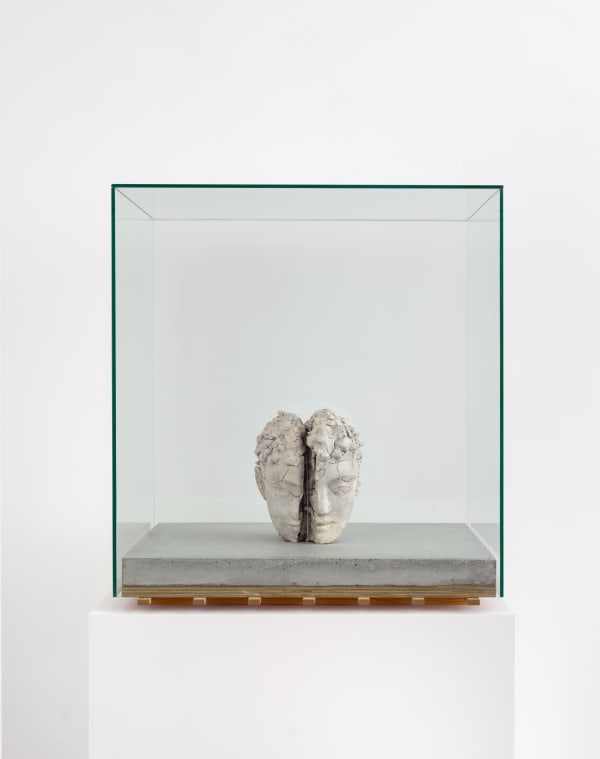
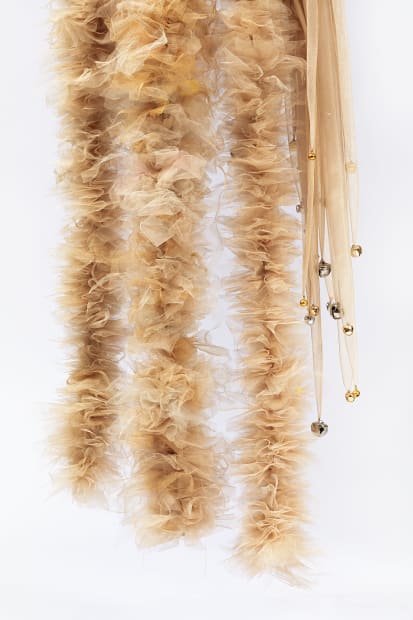
For thirty years, Lima has developed an idiosyncratic and entirely unique philosophical language. With a tendency towards the absurd and the sensational, she allows the audience to lose themselves in this potential for change. Laura Lima’s Balé Literal; Balerina #1 is considered a ‘ballerina’ by the artist, one that has movement and sound as well as an ethereal and atmospheric quality.
Upcoming, Laura Lima will have a major solo exhibition at the ICA London, opening January 27, 2026.

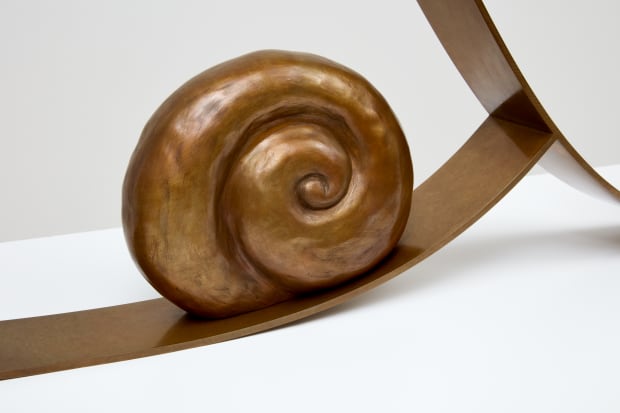
Rodrigo Hernández fantastical visual lexicon is rooted in a wide and distinctive range of sources: from Mexican pre-Columbian art to Japanese prints, from European modernism to science and literature. As in dreams, disparate scenes and sights are interwoven in surreal images, inviting the viewer to imagine new possibilities and uncover mysterious connections. Simmering with the emotional power of subconscious memory, Hernández’s works are suffused with the attraction of the unknown. His touchstones of poetry and philosophy frame his work within a broader epistemological and psychological exploration.

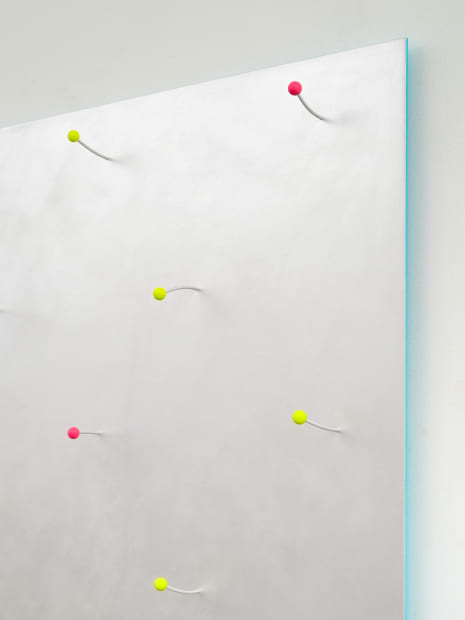
Interested in language and its inevitable abstraction, Lisa Williamson leans into the formal considerations of sculpture to create works that are visually precise, physically resonant, and often attune to the spaces in which they are exhibited. The artist’s idiosyncratic practice follows a logic that is associative; compressing internal experience into forms that are both tangible and resistant at once. While there is a significant level of reduction and abstraction throughout the artist’s work, aspects of architecture, landscape and the figure remain visible throughout.
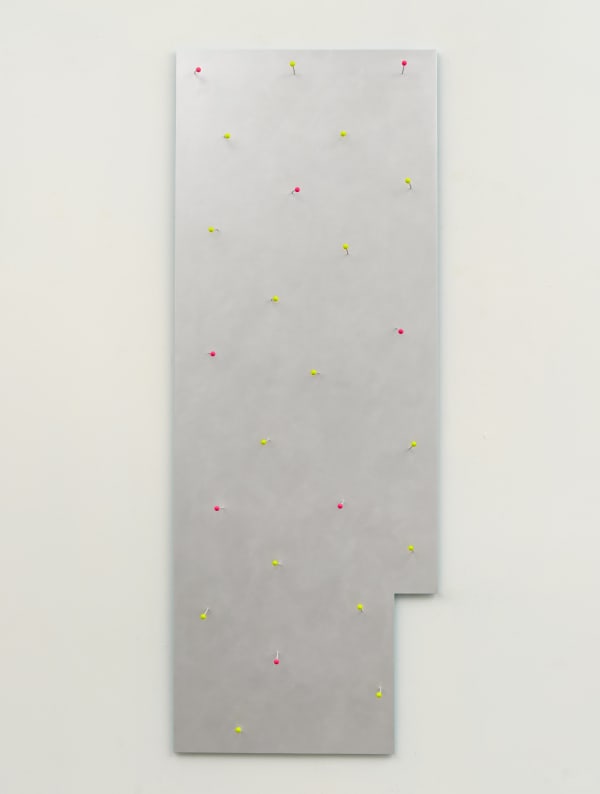
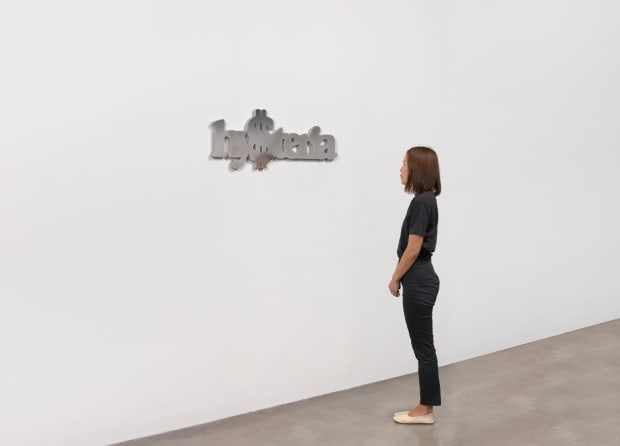
By linking psychoanalytic history with the visual language of advertisements and street culture, Hy$teria critiques the ways in which society continues to exploit and manipulate women's bodies and emotions for commercial gain. The work invites a reflection on the intersection of psychology, gender, and consumer culture by calling for a reexamination of how psychological narratives continue to shape and confine women's roles in society.
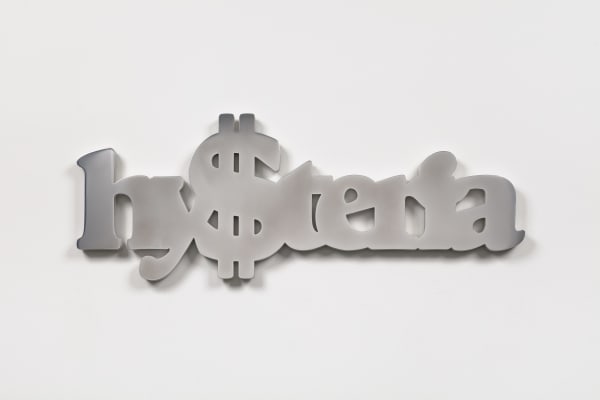
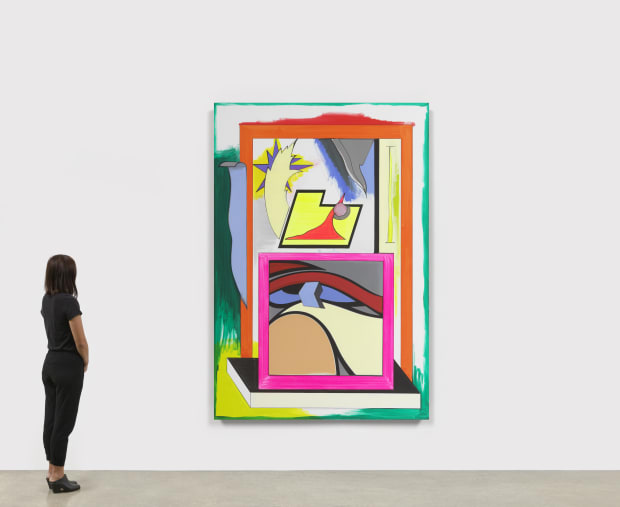
Among the leading German artists of his generation, Thomas Scheibitz has developed his own conceptual language that bridges the realms of figuration and abstraction, at times dissolving them entirely. Drawing from classical painting and architecture, the contemporary urban landscape, and popular culture, Scheibitz deconstructs and recombines signs, images, shapes, and architectural fragments in ways that challenge traditional contexts and interpretations. While centrally concerned with principles of classification and systems of order, the artist’s paintings, sculptures and works on paper resist traditional categorization.

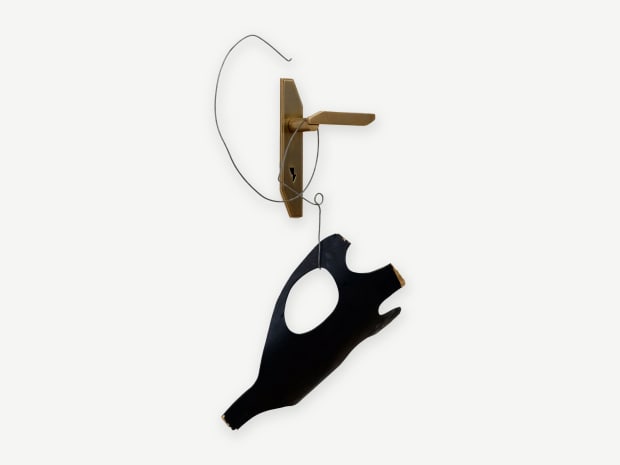
Martin Boyce’s sculptures, photographs and installations poetically investigate the intersections between art, architecture, design, and nature. Since the beginning of his career, he has incorporated a palette of shapes and forms that frequently recall familiar structures from the built environment – a phone booth, a chain-linked fence, a ventilation grill, to name a few – yet presents them in a way that is entirely new. Collapsing distinctions between past, present, and future, Boyce’s works seem to exist in their own autonomous world, untethered to any fixed time or place.
The brass sculpture, mounted on the wall at hand height, takes the form of a door handle, adorned with wire and a painted portion of an Eames leg splint, forming a mobile-like composition. Boyce has incorporated Eames splints in sculpture throughout his career, and the splint’s elegant, sculptural form encourages an aesthetic appreciation of the object, mimicking Eames’s own transformation of the mass- produced object into a sculpture.
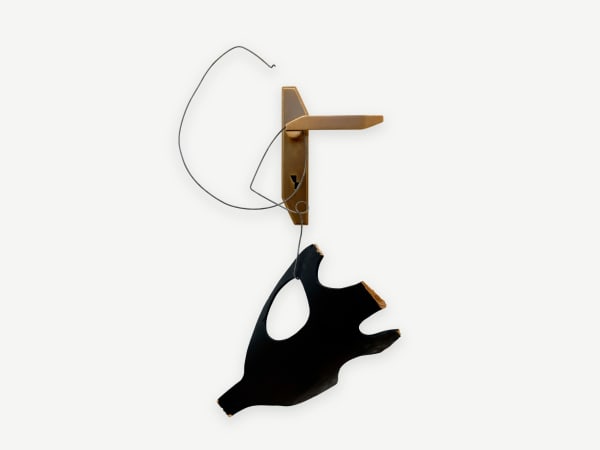

This body of work, entitled …and to draw a bright, white line with light, was produced for a major solo exhibition at the Art Institute of Chicago. The title is a play on the literal translation of the word photography which is "to draw with light," and the old phrase about photography being "the pencil of nature," as well as the activity of drawing a curtain. What interests Barth most about this project is that it is the first series in which she actually manipulates light, instead of just being the observer. Indeed, photography is always about light and exposure, yet here the artist is using light in an almost sculptural or performative way.

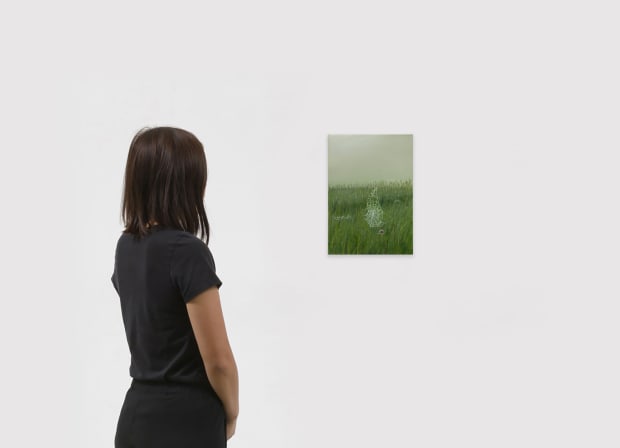
Dana Powell's small-scale oil paintings depict moments of transition and anticipation. They take the shape of night drives, full moons, swimming pools, elevator doors, still lifes with fruit, explosions, and peep holes. Unrelated at first look, these subjects prove malleable apparatus in demonstrating the unsettling power of the ordinary, and emotive potential of small shifts in formal painting strategies. Considered austerity is applied to Powell’s tableaus of the everyday, offering a window to the familiar and its undertow.

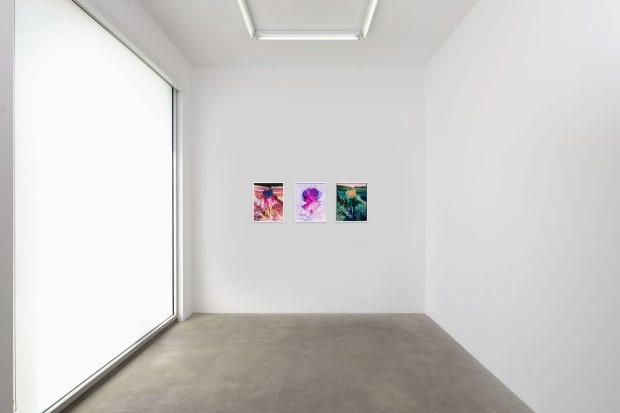
In this series, Lisa Oppenheim explores the legacy of Edward Steichen (1879-1973), well-known for his photographic innovations and experimental approaches to flower-breeding. In 1910, botanist Fernand Denis created and named an iris hybrid "Mons. Steichen" after him, though no images or specimens survive.
Steichen pioneered dye transfer printing in the 1930s, experimenting with unconventional color combinations to create vibrant, almost psychedelic images. In his spirit, Oppenheim used AI to generate hypothetical crosses between the parent iris species (Chameiris Alba and Iberica). She then produced analog prints of the AIgenerated images using the labor-intensive and almost entirely outmoded dye transfer process. Using nonstandard colors, she created diverse interpretations of the lost "Mons. Steichen" hybrid that explore the concept of both genetic and photographic verisimilitude.

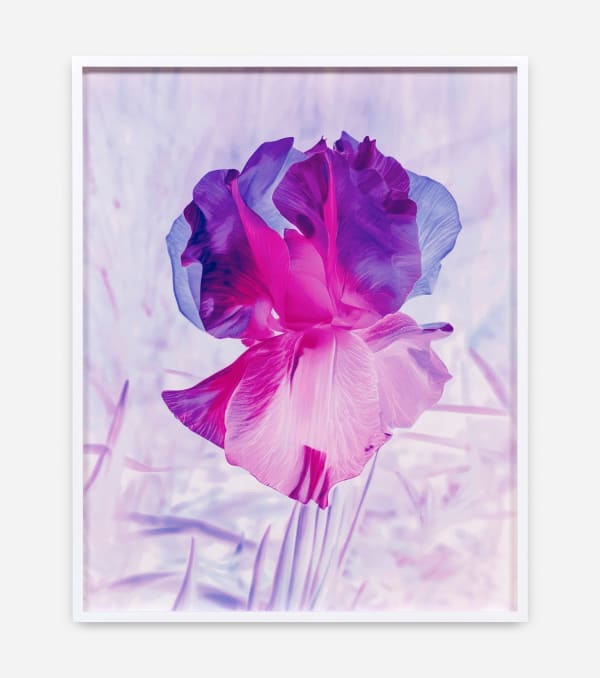


Encompassing sculpture, performance, installation, video, and drawing, Amalia Pica’s work examines systems of communication and what brings people together. Using seemingly simple materials and found objects, she investigates human modes of interaction, especially our desire to be understood and the accompanying pleasures and failures. Pica considers shared visual codes associated with verbal and nonverbal language systems – often incorporating playful signifiers of collective expression and cultural celebration – ultimately exploring cultural intimacy and the political potential of joy. As a result, her work has a lightness of touch and a feel-good quality, which Pica prioritizes for its power to draw viewers into a conversation.
In her ongoing Catachresis series, Pica focuses on the rhetorical device known as catachresis, the application of terms that apply to things that do not have their own word, such as the teeth of a comb, leg of a chair, tongue of a shoe or elbow of a pipe. Through both sculpture and works on paper, works in this series synthesize incongruent objects to explore the flexibility of language and its possibly comical consequences.
Amalia Pica’s exhibition, Keepsake, is on view at Cample Line, Thornhill, United Kingdom through December 14, 2025.
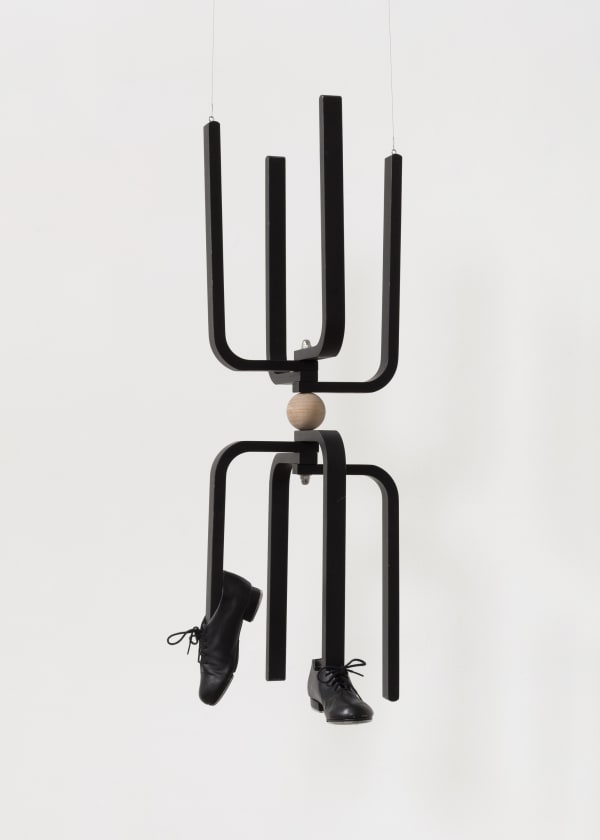
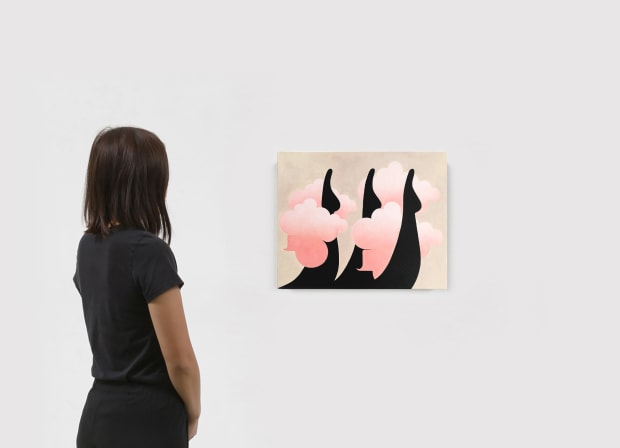
Over the past decade, artist Math Bass has developed a lexicon of symbols—letters, bodily forms, architectural fragments, animals, bones—arranged in a variety of scores, each symbol an empty space of meaning, filled in by the context in which it finds itself. Repetition of these symbols, rather than codifying them into one solid signification, exposes the difference at the heart of each iteration; there is always a gap in meaning, something unnamable left out of and left over in the viewer’s reading—a jouissance. It is this gap in the symbolic where Lee Edelman states queerness lies—not as an easily categorized liberal identity but as a process of unmaking and undoing that leaves (gendered) subjectivity as we know it in question. That these symbols are familiar only heightens our unsettling; the negative space of these compositions, a major player in Bass’s practice, adds further to the gap.
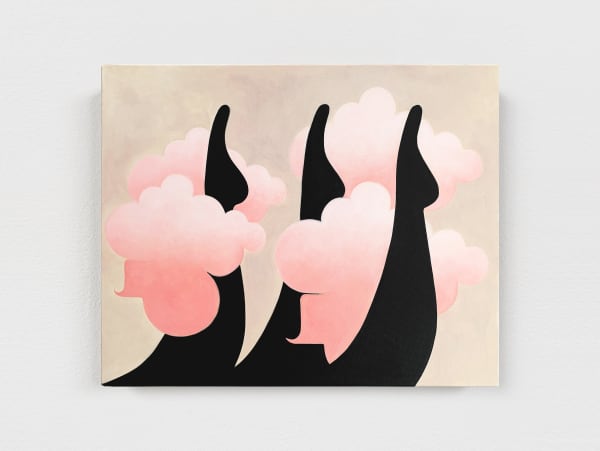
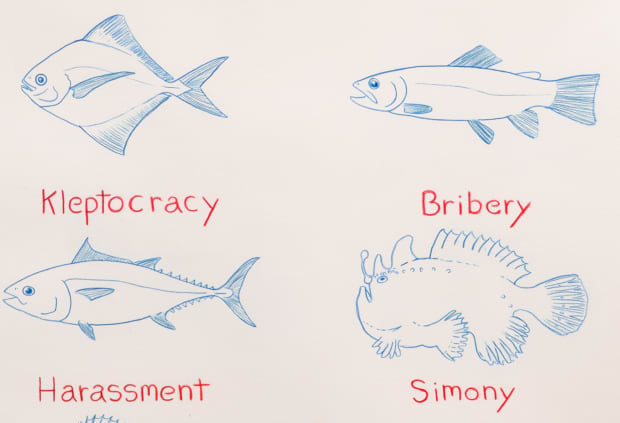
Mark Dion’s drawings take a sharp look at the issues, prejudices, information, and misinformation present in the world today. Presented in the format of educational charts, Ichthyology of Corruption, represents the sort of didactic poster seen in a classroom or at an academic convention that combines images, symbols, and terminology in a way that eludes straightforward meaning. Categories and labels are inscrutably applied to biological drawings, inviting the viewer to draw analogies that depend on their own preconceived notions and biases.
Mark Dion’s exhibition, The South Florida Wildlife Rescue Unit, is currently on view at the Pérez Art Museum, Miami through February 1, 2026.
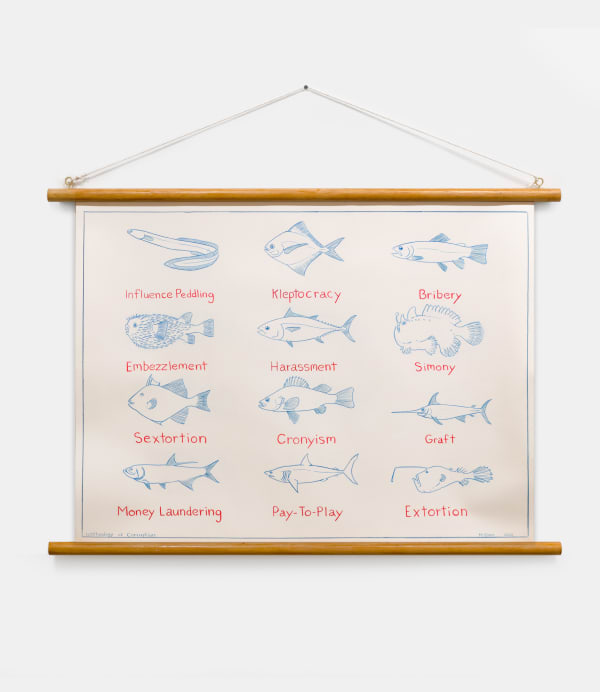
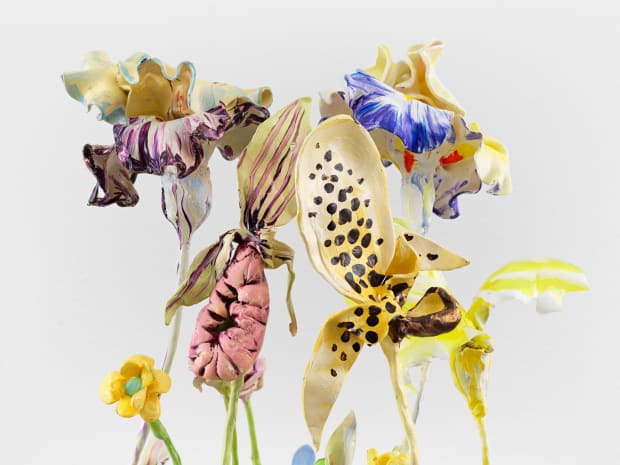
Nathalie Djurberg and Hans Berg’s new series of sculptural flowers offer a fragile beauty and an untamable, organic logic of their own. Constructed from mixed media – employing modelling clay, paint, fabric and resin – the sculptures recall real species of lilies or orchids, as well as fantastical floral arrangements in other-worldly colors and forms. Flowers recur in Djurberg & Berg’s practice due to their abiding interest in the fleeting nature of human emotions and their shared symbolism for human themes of love, joy, desire, sadness and vulnerability. Representing the circle of life, from a shy bud to a beautiful blossom to a withering plant, the flower form has been a constant interest in Djurberg and Berg’s practice.


Sherrill Roland’s work 168.832, gives visual form to vivid memories of the ten months he spent wrongfully incarcerated. In this steel sculpture, Roland recalls the experience of spending day after day in prison, when he would often pass the time by tracing the outlines of the white cinder blocks, which measured 8 x 16 x 8 inches and formed his two-man cell. The repetitive, tactile action became a method of meditation that offered a mental escape to the freedom beyond the physical confines of the prison cell.
In 168.832, Roland references the repetition of mindlessly tracing the cinderblocks to fight against the collapse of mental stability. Roland fills the channels with resin mixed with Kool-Aid, drawing our attention to the line and the space between it.
